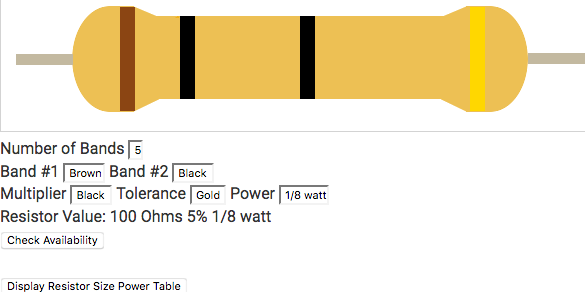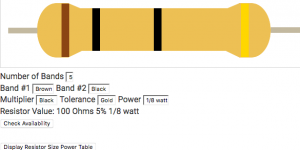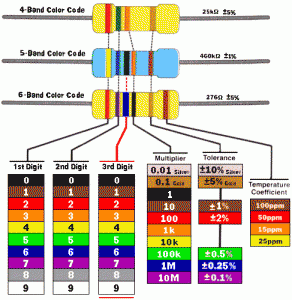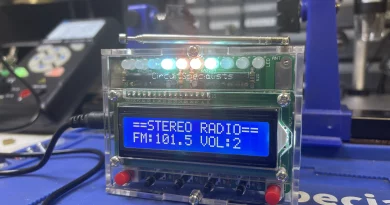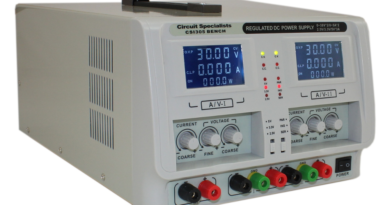Resistor Color Calculator
Finding the right resistor that matches the resistance needed for your project can be difficult. The multitude of color band combinations signifying the resistance and tolerance of a resistor makes it difficult to search through the available options and find the resistor you need. Therefore, to assist in finding the perfect resistor for your project, Circuit Specialists’ Tech Support Engineer Jake created a Resistor Color Calculator that uses a graphical user interface (GUI) application to help you create the exact resistor that matches your project’s needs and then easily search our selection of resistors for it.
Resistor Color Calculator
To use the Resistor Color Calculator, all you need to do is specify the total number and color of the bands on the resistor. The GUI will then construct the resistor that matches your specifications, and then you will be able to directly search Circuit Specialists’ selection of resistors for it. If you are confused about how resistor color coding works, check out the section How Does Resistor Color Coding Work below.
The Resistor Color Calculator queries Circuit Specialists’ selection of resistors using the following fields:
- Number of bands (values range from 4-5 in our selection)
- Color of Band 1
- Color of Band 2
- Color of Band 3 (if a 5 band resistor)
- Color of Multiplier Band
- Color of the Tolerance Band
- Power (values consist of 1/8, 1/4, 1/2, and 1 W)
How Does Resistor Color Coding Work?
The bands specify the resistance suitable for a given resistor. Each combination of colors uniquely specifies a given resistance and tolerance (or range of resistances similar to a margin of error in a statistical estimate) for a resistor. The scheme used to color resistors follows the IEC 60062 guidelines. Typically, resistors contain 4-6 bands. Where the first 3-4 bands denote the resistance that the resistor can handle. Bands 1-3 denote the significant digits of the resistance value while the final band denotes the multiplier. The next band then denotes the given tolerance of the resistance value. Resistors with 5 and 6 bands are highly precise.
Click here to view the carbon resistor color guide and calculator live in action. Use it to help you cross reference or find the corresponding resistor on our website. Keep in mind that certain resistor value resistors are not made. Below is another handy guide for calculating your resistor value using a chart.
The other great feature of the calculator is that once you determine what kind of resistor you have, you can click “check availability” and it will navigate to the exact item page of the resistor you are looking for. This makes it easy to shop specific resistor values. We hope you enjoy the new tool and happy resistor shopping!
